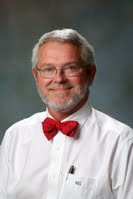The Ethic of Reciprocity
The challenge for schools is clear. A school can either reflect a culture or it can affect a culture.
When I was in elementary school it was common for many students to have wooden rulers with the words “The Golden Rule” emblazoned upon the back. I have no idea whether local boards of education provided the funds for this equipment, whether they were donated by religious or charitable groups, or if they were simply on sale at the local “Five and Dime”. We just had them in our pencil boxes. As I recall, the actual words of the rule were not printed. Only the title of this ancient wisdom appeared. Throughout the years various teachers would expound on its meaning. Classes would have discussions. It became the magnetic north for our childhood’s moral compass.
The written form of “Do Unto Others” dates back at least 4,000 years. Assuming oral traditions, we can easily guess that this ethical law predates writing by additional thousands of years. Scholars maintain that “The Ethic of Reciprocity” is found in virtually every major religion. The Judeo-Christian tradition certainly espouses it as early as Leviticus, and Jesus himself (as reported by Matthew and Luke) underscores this idea as a godly manner of living.
Confucius, Siddhartha, Muhammad, Native Americans, Quakers, Bahai, Humanists, along with contemporary top representatives of world religions (over 200 of them who signed on in 1993 for a universal declaration for a global ethic) support this notion. It must be a pretty good notion to garner this kind of support! I doubt my second grade teacher had any knowledge of its background. But she knew an eternal Truth when she saw it.
I also doubt whether the ethic appeared in any curriculum from my childhood. It is part of an unwritten (yet megalithic) foundation of the schooling process that at once molds, and is molded by, our culture. While there are certainly moral attributes that are written into handbooks and policies (“zero tolerance for bullying”), the vast majority of behaviors that form our graduates are based on cultural underpinnings. “High Performing Schools”, for example, are usually found in areas where education is highly valued. And vice versa.
The challenge for schools is clear. A school can either reflect a culture or it can affect a culture.
Effecting change is harder. It is resisted at every level. Yet an appeal to that mysterious internal moral compass, the conscience, is usually greeted hospitably by even the most resistant. “Do unto others as you would have them do unto you” is a good start. It’s also a good finish.












